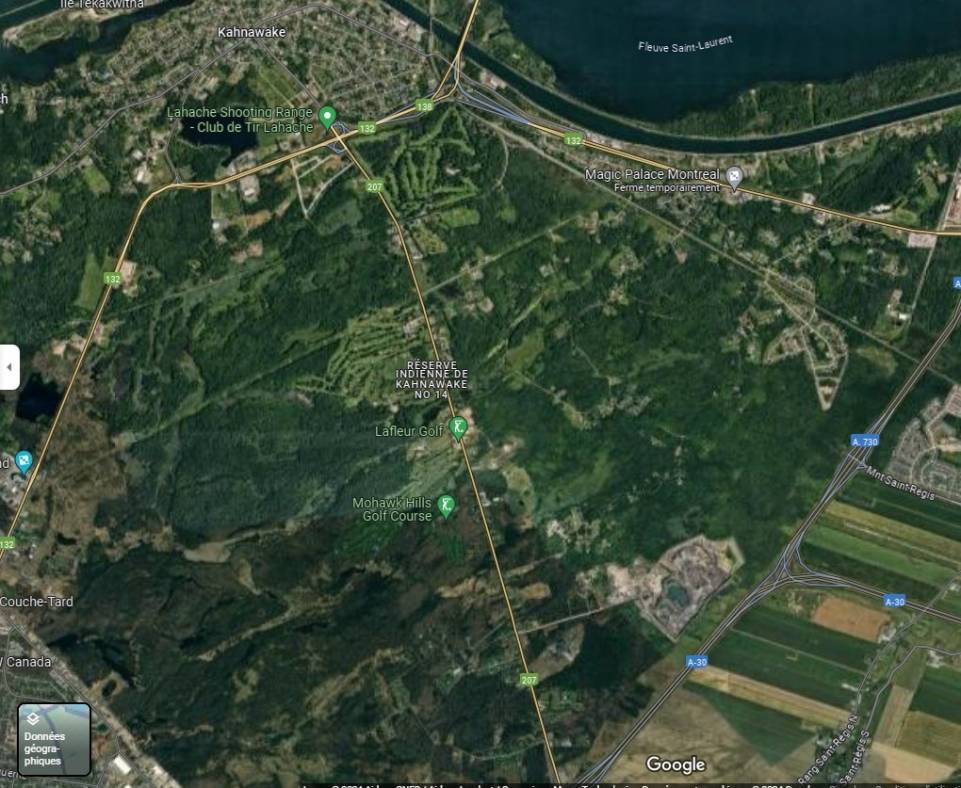Public Safety unit launches traffic study on Route 207

The Route 207 in Kahnawake. (Photo : Google Maps)
The sight of traffic lining up onto the Highway 138 up-ramp to the Mercier Bridge from Route 207 every morning is a familiar and unpleasant sight for many who live in the community. Soon, the Mohawk Council of Kahnawake will know exactly how many cars use the road every morning.
Marc Lalonde, Local Journalism Initiative Reporter, Iori:wase
On Monday morning, Transport Quebec, at the MCK’s request, set up traffic counters on Route 207 in an effort to determine the level of traffic and what might be done to curb the volume of vehicles using the highway as a shortcut to the bridge every morning, especially since the majority of motorists using the roadway come from outside the community.
“Ninety-nine percent of that traffic every morning is not from town, or going to town,” MCK Public Safety Commissioner Lloyd Phillips. “It’s people cutting through our land to get to the bridge. It’s also a residential area and people who are just trying to go into town in the morning shouldn’t have to be stuck in traffic.”
Phillips said swelling traffic numbers on Route 207 are a direct result of residential development in communities south of Kahnawake.
“It’s been going on and growing for about ten-plus years,” he said. “You have all these houses being built south of here and the majority of that traffic is headed toward the Montreal area every morning. It really blew up about a year ago, though. There’s a lot.”
That’s why this traffic study will be important, he added.
Transport Quebec traffic counters will monitor traffic volume at different times of day and monitor average speeds of traffic as well, in an effort to figure out exactly what might be done to keep traffic levels down, Phillips added.
Public Safety has already done most of what they could do in an effort to stem the speed and volume of traffic – largely to no avail, Phillips lamented.
“We’ve revised the speed limit. We’ve created double lines on the road and we’ve installed extra warning signage. We have done a lot,” he said.
After Transport Quebec crunches the numbers, Phillips and MTQ will meet to figure out how many flashing yellow caution lights might go up on the highway after the data is reviewed.
“At that point, we’ll know how many lights we think we will need,” he said. “It helps drivers’ awareness to be aware in that area that people live there. They really work in letting people know that it’s a residential area.”
The week-long traffic study will conclude Monday.